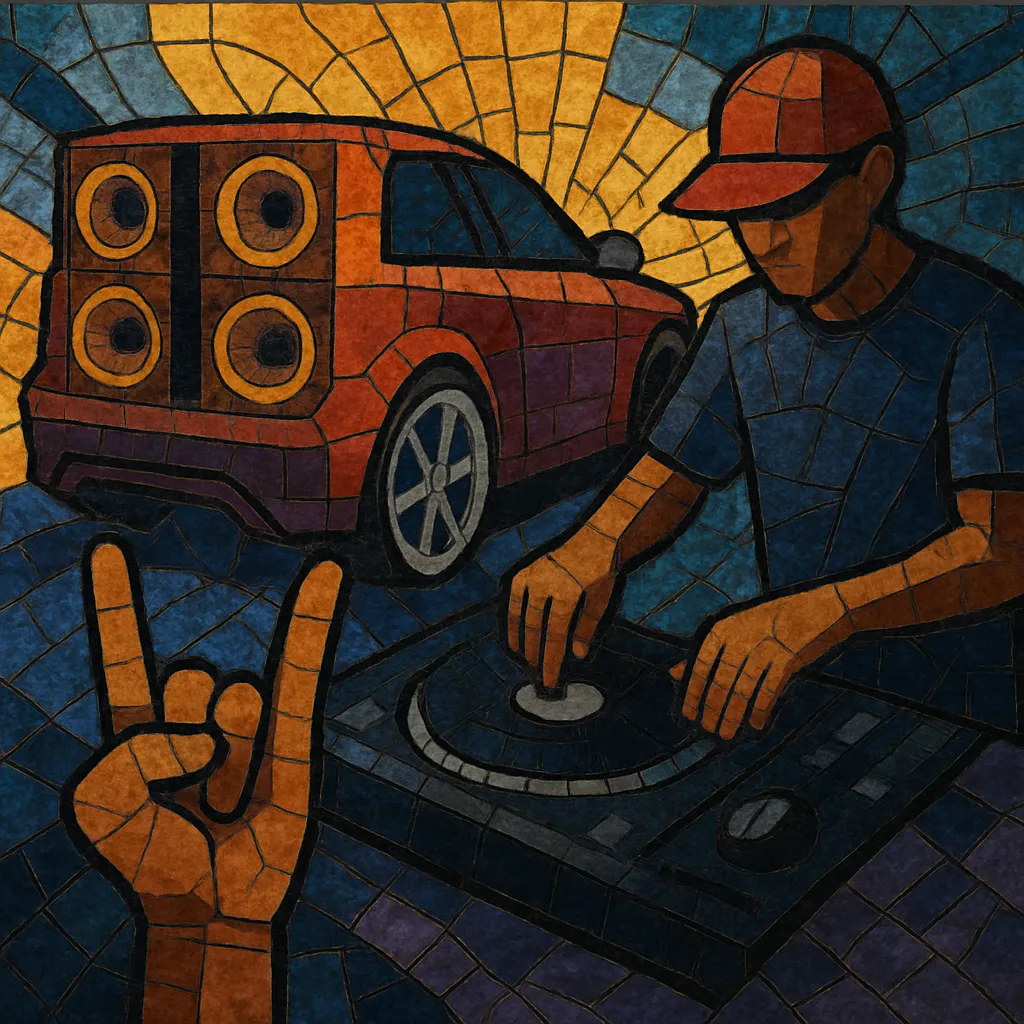Funk automotivo is a Brazilian club and street‑party offshoot of funk carioca, engineered specifically for ultra‑loud car sound systems (paredões). It emphasizes trunk‑rattling sub‑bass, stuttered edits, chopped vocal tags, sirens, and simple, hard‑hitting drum patterns that translate clearly in noisy, open‑air settings.
Musically, it strips funk down to its most physical elements: an 808‑driven kick and bass, the tamborzão or similarly syncopated patterns, and call‑and‑response vocal chops. Tracks are often instrumental or feature short, catchy Portuguese phrases, with arrangements built around big “drops” designed to move crowds and showcase sound systems.
Funk automotivo emerged in Brazil as DJs and producers adapted funk carioca for outdoor car‑audio culture known as paredões. Drawing on the booming low‑end of Miami bass, the percussion logic of the tamborzão, and the high‑SPL aesthetics of northern Brazilian sound‑system scenes linked to tecnobrega/aparelhagem, producers refined a minimal, sub‑heavy style that hits hard on mobile rigs and open streets.
Producers prioritized loud, clean sub‑bass and percussive clarity over dense harmonies. Common traits include chopped or looped shouts, airhorns, sirens, and rapid stutter edits (often called "serrote"), with drops that showcase the system’s low‑frequency power. Tempos vary—often clustered around 130–150 BPM—but the mix is always voiced to make the bass and kick dominate.
By the mid‑2010s, YouTube, SoundCloud, and WhatsApp groups accelerated the spread of bootlegs, DJ tags, and regional edits. Automotivo remixes of pop and regional styles circulated alongside original beats, blurring lines between official releases and grassroots edits. The sound cross‑pollinated with São Paulo’s heavier funk (e.g., mandelão) and the southern "mega funk" wave.
In the 2020s, the "phonk automotivo" phenomenon (often labeled Brazilian phonk) carried automotivo’s sub‑weighted drums, cowbell riffs, and stutters into international feeds, further cementing the genre’s influence while keeping its core purpose intact: music designed to make car sound systems and street parties thunder.


